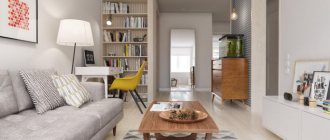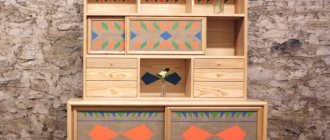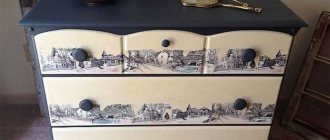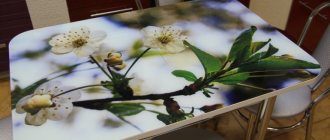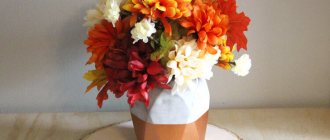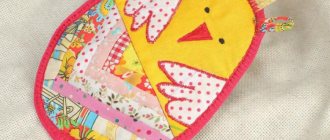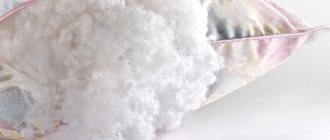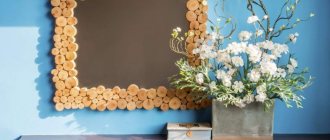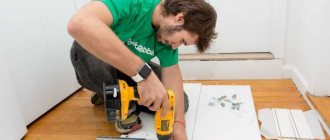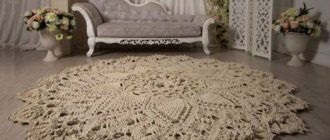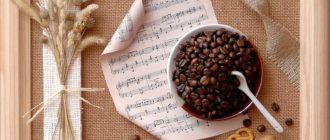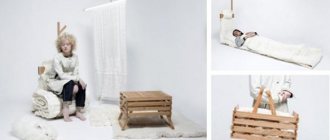In most homes there are headsets that have gone out of fashion or have lost their presentability due to prolonged use. If your budget allows, you can buy new designer furniture and throw away the old sofa. However, if you want to save money, you can transform the interior yourself, creating a special comfort in your home. Decorating furniture is a great opportunity to give new life to old things and transform the interior. Today there are many techniques for transforming the decor of a room with your own hands; some of them are discussed below.
Using self-adhesive film
This method of decorating furniture is the simplest and most accessible at home. This update method is suitable for the following products:
- tables;
- chairs;
- shelves;
- kitchen sets;
- chests of drawers and bedside tables.
Thus, any products made of wood, metal or plastic are suitable for gluing with film. A minimum set of materials is used for decoration:
- Self-adhesive film. The material comes in various colors and textures. The most common film is one that is painted to look like wood. In construction stores there is film in bright colors and shades, with a metallic sheen or decorated with designs.
- Scissors.
- Degreaser.
- Metal spatula.
The work of decorating furniture begins with its preparation. To begin with, the product is cleaned of paint using a metal spatula. Next, the surface is cleaned and degreased. The film is applied in strips to the prepared furniture. This material is sold in rolls, which differ from each other in width. If the appropriate width of the film cannot be found, it can be trimmed at the edges.
During the process of pasting the film, you need to ensure that the material is glued evenly, without bubbles and does not bulge. Deformation of the film can be avoided by helping yourself with a roller to smooth out the coating. That's all the recommendations for decorating old sets with film. If desired, you can use several colors of adhesive tape, which will help create a bright and unusual room design.
Solution
Preparation of gypsum solution For casting large gypsum products, the solution is prepared in small portions. The thick solution does not flow well and does not completely fill the mold, which has a thin relief.
An adhesive solution – gelatin or flesh solution – can slow down the hardening reaction. Recommended 25% con. It must be used within one day. In addition, the use of an adhesive solution gives the products strength.
Flat products are ground to a flat surface sprinkled with fine gypsum flour and left there for a day.
Painting with acrylic paint
In order to emphasize the individuality of the owners of the house, you can decorate the furniture with various designs using acrylic paints. For example, using several paints of different colors, you can create a cozy children's room, where cute flowers will be painted on a pink chest of drawers, and multi-colored lollipops will be depicted on a yellow desk. Any child will be happy to spend time in such a room, and will also take an active part in modernizing the furniture.
An important condition is that before painting furniture with acrylic paint, its surface must be prepared. To do this, you need to remove the remnants of the old paint, clean the surface from dust and dirt. The joinery product can be covered with plain paint or decorated with drawings and patterns. Here you can give free rein to your imagination and discover the hidden talent of a designer.
For variety, decorating with acrylic paint can be combined with the decoupage technique.
Having completed the decoration with acrylic paint, the surface of the furniture must be varnished to give a glossy shine and protect the product from wear. The downside of this furniture renovation technique is the unpleasant smell of paint and varnish. Therefore, all work must be carried out outside the home. After a few days, the smell from the decorated items will disappear and they can be placed in the room.
Fastening gypsum stucco molding
In order for everything to be consistent in the same style, experts recommend repeating patterns on the ceiling and walls. However, the main thing here is not to overdo it, since a visual decrease in space may occur. At the same time, you should not use heavy stucco elements in small rooms, which can create the impression of inappropriateness and artificiality.
Recommendations:
- decide where the decor will be located, taking into account the dimensions of the apartment;
- voluminous products should be securely fixed, carefully observing the fastening technique using screws and dowels;
- before starting the fastening process, rinse the desired area thoroughly and completely remove the whitewash;
- then mark the installation boundary with a pencil;
- make notches on the product, ceiling and wall with a chisel;
- if you are installing a cornice, then you need to start from the corner. Using a hacksaw, we cut the stucco molding at an angle of 45° into 2 elements;
- Next, we prepare a gypsum solution with the addition of 3% wood glue or use special glue;
- We wet the surface of the wall with water and apply an adhesive mixture to it;
- install the part in the right place, moving it slightly;
- Remove excess plaster with a plaster spatula.
- If the elements of the cornice are large enough, then they should be secured using screws:
- Initially it is necessary to make holes in the wall;
- then drive the plugs into them and only then screw in the screws;
- then, opposite the screws, on the back side of the cornice, holes are created in the wall, which expand slightly in depth. They must be filled with gypsum mortar and the product attached to the fasteners.
Socket fixation:
- make through holes in the socket, which should be located opposite the plugs with screws in the ceiling;
- Screw a soft wire to each screw, which should be coated with nitro varnish in advance;
- pull the wire through the holes and screw it onto the screw;
- Cover the holes with plaster.
Using ready-made stickers for decoration
Stickers that are used for interior design have recently appeared on the shelves of hardware stores. The stickers contain various drawings of animals, nature, still lifes, and cartoon characters. Decorations are used to decorate walls, create collages, and they can also be used to decorate an old wardrobe or chest of drawers. The stickers are attached to a cleaned surface and smoothed out on it. There is no need to cover the furniture over the stickers.
If desired, such stickers can be made to order so that they fit harmoniously into the interior of the room. You can purchase several identical stickers of different sizes and place them as pictures, as well as decorate furniture with them. The advantage of using this method for decorating furniture is that the sticker allows you to hide minor defects on the furniture without completely redoing it. In addition, in the future, the sticker can be easily removed and again completely change the interior of the room.
Carved bracket
This element of carved decor for furniture is made mainly from oak, beech and ash. Previously, brackets were very expensive, since they were made by hand, but later, with the advent of CNC machines, they began to cost much less.
In addition to furniture, brackets decorate doors; they can also be seen on arches, in the kitchen and many other places.
Aging technique
Vintage antique furniture is valued by designers for its luxurious appearance. A chest of drawers that once graced the room of an aristocracy is now worth tens, sometimes even hundreds of thousands of dollars. Antique furniture will fit into design styles such as English, antique, Gothic or ethnic. If you can’t purchase antique furniture, you can create it yourself. Aging techniques can be applied to only one piece of furniture or the entire set can be changed.
For the aging technique you will need the following materials:
- Stain.
- Antique wax.
- Acrylic paint "metallic" or "gold".
- Brushes.
- Materials for cleaning the surface - spatula, degreaser, detergent, sponges.
- Two packages of acrylic paint of the same color, but different shades.
- Varnish.
There are two main ways to age furniture. The first of them is used exclusively on wooden products. First, the surface must be cleaned of the previous coating and degreased well. Next, a layer of stain is applied, which must be left on the product for 6-8 hours. Then, the remnants of stain that have not been absorbed into the product are carefully removed with a sponge. Antique wax is rubbed onto the prepared surface, which gives the furniture that same antique look. On top you can apply golden acrylic paint in the form of patterns or monograms. Using the same paint, you can cover the sides of furniture or decorate fittings. The finished product must be coated with a thin layer of varnish.
Necessary materials
Stucco appeared a long time ago. Since this is a very beautiful decoration, it used to decorate only palaces. This work required special skill and talent, and therefore only artists and sculptors could perform it. But nowadays you can make stucco molding from plaster yourself. So, today we will talk about do-it-yourself plaster stucco molding.
What do we need?
- finished item;
- building gypsum;
- art plasticine;
- silicone putty (acrylic silicone);
- clear varnish;
- tools.
Aging using acrylic paint
This method is used for both wooden joinery and plastic or metal. The effect is achieved by using two shades of paint that differ slightly from each other, for example beige and dark beige. Before starting work, the surface must be thoroughly cleaned and, if possible, leveled.
The clean surface is covered with a thin layer of paint of the first shade. To obtain a high-quality result, you need to dry each layer of paint well to avoid drips and delamination on the coating. The designer needs to apply as many layers of paint as necessary to hide the real color of the furniture. When the paint layer of the first shade has completely dried, the second type of coating is applied to the product in the same order.
In order to create an aging effect on the furniture, in some places you need to apply sandpaper, which will partially erase the layer of paint of the second shade, thereby giving the furniture an old look. After completing all manipulations, the product is varnished.
Features of installation of gypsum stucco molding
If polyurethane stucco or foam products are used for repairs, then special adhesives are used to attach them.
Due to their weight, gypsum products require a more reliable and durable connection to the surface.
- The surface must first be prepared accordingly: if necessary, leveled and strengthened with mortars, and also necessarily treated with primers.
- You should begin installing hand-made stucco molding no earlier than three days after pouring it into the mold. The fastening points on the wall, ceiling or other structures, previously marked with a marker or pencil, are moistened and coated with PVA glue. The reverse side of the stucco elements is also processed in this way, after which they are fixed to the surface.
- But this method is only suitable for fastening small elements - on massive parts, holes for fastening are pre-prepared using self-tapping screws or self-tapping screws. The drilling process should be performed as carefully as possible, and subsequently the caps will need to be filled with plaster.
- Plaster puttying will also be required for large elements consisting of several parts. After drying, the seams must be sanded.
- The final touch is the application of primer and paint in accordance with the chosen style of the room and the color scheme of the interior.
Using decoupage and decopatch techniques
The use of decoupage techniques for decorating furniture allows you to create products for any interior style. This method is simple to implement, does not require large amounts of money, and is very exciting.
Interesting to know: The term decoupage, translated from French, means to cut, which is the basis of this technique.
To decorate furniture using the decoupage technique, any stickers, drawings and images are used. You can use ready-made drawings or create your own using computer graphics. These can be photographs of celebrities, sheet music, landscapes and still lifes, images of celebrities, family photos and any other materials.
As usual, the initial process of decorating furniture is preparing the surface for work. A layer of PVA glue is applied to the cleaned furniture, and a design is placed on it. If the decoupage technique is being performed for the first time, then it is better to use decorative paper napkins as a design. It is imperative to separate the dense bottom layer of napkins and leave only the image. In your work, you can use either a whole napkin or images cut out from it. You also get an interesting collage if you tear the image into several parts, which are glued at a distance from each other.
What drawings can be used for decoupage
When decorating carpentry, you can use several patterns at once, which are glued end-to-end, scattered, or superimposed on each other. Craft stores sell decoupage kits, which include special glue and a set of drawings and stencils. In fact, in any home you can find a lot of old magazines, newspapers, photographs that can be used for this technique.
Tip: if you use drawings on thick paper for decoupage, you need to soak it well in PVA before gluing it.
To decorate furniture, you can also use scraps of fabric, lace, beads, sequins, pebbles, and sparkles. The fittings are combined with patterns in any order. In order for the decoupage to not lag behind the surface, it must be thoroughly varnished and left to dry.
To decorate glass parts of furniture, another technique is used - decopatch. This method involves gluing the design face down onto the surface. This method is applicable on glass cabinet doors and on interior door openings.
Selecting a figure
The variety of gypsum stucco today is not limited to the creation of figures of thick-cheeked cupids, graceful lines of flowers and petals, and indoor cornices. Using this material, you can create an imitation of a fireplace, “grow” a tree on a vertical wall surface or on the ceiling. The figure can be classically white or painted in various colors. The choice is determined by the wishes of the customer.
First of all, you need to decide on the appearance of the future work of art, its size, and location. The best option is to make a natural-size stencil or apply a design to the surface that you plan to decorate.
The options are endless. The simplest ones are stars, flowers, snowflakes, letters. You can decorate the room with original three-dimensional paintings - landscapes, still lifes. A “carved” frame will allow you to achieve complete imitation.
Decorating with fabric
To update upholstered furniture, the method of upholstering it with fabric is used. This method allows you to radically change the interior of the room. In a few hours of work, you get a completely new sofa and armchairs that are no different from those bought in a store. In order for the new upholstery to lie perfectly evenly, you need to remove the old fabric from the upholstered furniture. A construction stapler is used to attach the new material. This decoration method is quite complicated and may not work the first time.
If the master doubts his abilities regarding the upholstery of the sofa, then he can make a new furniture cover. This way you can refine upholstered furniture without spoiling its original appearance.
The fabric can also be used to decorate other furniture - tables, chests of drawers, chairs, cabinets and shelves. Decorating with fabric is done using a combination of two techniques - decoupage and patchwork. Work on updating old furniture can be divided into several stages:
- Preparatory stage. Before carrying out work, it is necessary to prepare the surface, namely, clean it of varnish using sandpaper and remove any contaminants. In addition, you need to remove fittings from the furniture - hooks, locks, handles and more.
- Decoration. To decorate carpentry with fabric, you can use either a whole roll of fabric or remnants of various fabrics. It looks very beautiful when the fabric on the furniture repeats the fabric of the curtains or bedspreads. The fabric must be soaked in PVA for 30-40 minutes, and then applied to the surface of the product using an adhesive spray. You can decorate the fabric with colored ribbons, lace and other accessories.
- Consolidation. To prevent the fabric from fraying and getting dirty, it must be generously coated with a layer of varnish.
Thus, furniture decor is quite an interesting and creative activity. It does not require expensive materials, since you can use everything you can find at home. By upgrading old furniture, you can not only save on buying new ones, but also surprise your guests with the unusual cozy atmosphere of your home.
Pros and cons of stucco in the interior
Nowadays, with the help of this type of wall decoration, it is possible to add volume to small rooms and give them the proper style. Plaster stucco decorations, placed proportionally on the walls, will easily correct the shape of the rooms. The so-called moldings will allow you to visually change the room and hide existing shortcomings. And how elegant an openworked niche in the wall or your favorite fireplace looks.
As mentioned, stucco is made from gypsum or polymer materials, and wooden decor is also used. But finishing with wood is a very expensive procedure, although it carries with it irreplaceable, environmentally friendly qualities. A much more economical material is polyurethane. It is durable and reliable, does not cause allergies in humans.
The advantages of gypsum stucco are its ability to penetrate even a small hole or crack. Since when it hardens, it has the property of expansion.
Modern manufacturers offer a wide selection of ready-made designs. It is enough to fix them with liquid nails, sealant or strong glue to create an exquisite design.
What are the disadvantages of stucco? The main problem with gypsum molding is the large mass of parts and, in comparison with polyurethane stucco, a higher price. Gypsum is a rather fragile material.
The disadvantage of polyurethane is its lack of durability, the release of toxic substances when heated, and sometimes inherent deformation. It is better not to use if there are people in the family who are susceptible to allergies. If the damage is serious, it is almost impossible to repair this product.
There is an assertion that this polymer material adequately replaces its more expensive gypsum counterpart, but polyurethane is not able to convey all the lines and transitions in the scenery as well as gypsum.
Coating furniture with craquelure
Many home craftsmen use craquelure to help achieve a cracking effect. It is achieved as follows:
- You need to carefully apply craquelure varnish to the paint that has not yet dried;
- it is prepared from egg white or PVA glue; sometimes vinegar or gelatin is used.
- for the cracking effect to be most vivid, the paint must be applied twice;
- The second layer is applied immediately after the first has dried: then the “cracks” that appear will be visible through the top one.
Some people consider coating products with translucent paint, which is called glisal, glaze, or azure, as a special chic when decorating.
Answers on questions
How to understand what quality materials the manufacturer used to make furniture?
It is difficult for a non-specialist to determine what material is in front of him and what quality it is. Request certificates of conformity from the manufacturer for all materials used.
What material is suitable for bathroom furniture?
In rooms with high humidity it is advisable to use MDF in enamel. The paint will completely hermetically cover the parts on all sides without joints at the ends and without the use of glue.
What is triplex glass? And how does it differ from tempered glass?
Triplex is a type of glass made from three or more layers: two or more glasses glued together with a protective or decorative film. The impact resistance of triplex is higher than that of tempered glass.
What material are the most reliable furniture facades made from?
In terms of wear resistance and durability, Phoenix plastic and TSS Clif plate are considered the most reliable today.
What colors of materials are in fashion now?
White shades of furniture are always in demand. Gray and concrete colors are popular. Wood textures in combination with monochromatic ones look original and modern. But it’s better to focus on your preferences in color: you need to choose tones that you personally like, even if they are not in trend.
laminated chipboard
Laminated chipboard is actively used in furniture production. This is a material consisting of wood chips and sawdust, which are pressed at high temperatures using a minimum amount of formaldehyde resins. The board is laminated with tarred paper. After cutting the slabs into pieces for furniture, the ends are treated with melamine or PVC edges. For household furniture you need class E1 chipboard.
Expert opinion
Korzhavin Daniil Dmitrievich
Designer of stylish home furniture
The myth about the harmful effects of formaldehyde in laminated chipboard is greatly exaggerated. The resin content is too low to affect humans. Fully laminated chipboard with edge-covered ends is not capable of emitting harmful substances, which means it is safe.
Furniture made from chipboard with water-repellent impregnation can withstand changes in humidity and temperature, lasts a long time, and does not deform. It is even used for bathroom and kitchen areas.
The positive properties of furniture made from chipboard include:
- Variety of thicknesses.
- Endurance and durability.
- A huge selection of colors and textures: plain, wood, fancy.
- Applying a decorative coating on both sides of the slab.
- Budget cost.
The disadvantages include the possibility of chips, scratches, and dents.
MDF
MDF is wood waste, crushed to the smallest particles. Under pressure and high temperatures, wood dust is soldered into a homogeneous mass without the influence of additives. MDF forms a dense board due to the natural components contained in the raw materials.
Due to its homogeneity, the slab bends under the influence of temperatures, is easily milled, sanded, and cut into different shapes. The material is moisture resistant, does not succumb to fungus, and tolerates treatment with varnishes and paints well.
MDF has different thicknesses and is used for the manufacture of cabinets, facades, and countertops. The material can be polished or laminated, suitable for painting with enamel. MDF serves as the basis for applying plastics and PVC films.
The positive qualities of the slab include:
- high density and durability;
- resistance to moisture and temperature changes;
- wide possibilities for processing and using the material;
- affordability.
The disadvantages include higher weight than laminated chipboard.
Fiberboard
Fibreboard - fibreboards are similar in manufacturing technology to MDF. Fiberboard with a thickness of 4-6 mm is needed in furniture production for the back walls of cabinets and the bottom of drawers. Plates 8 mm thick are inserted into sliding doors.
The material can also be sanded, laminated or untreated. Fiberboard does not tolerate high humidity and is not recommended for installation in bathrooms.
